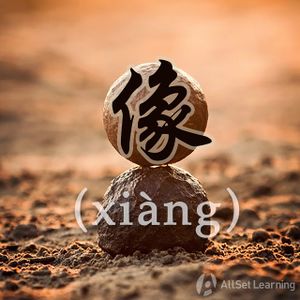Difference between revisions of "Comparing "kanqilai" and "kanlai""
| Line 20: | Line 20: | ||
*这 道 菜 <em>看起来</em> 很 好吃。<span class="pinyin">Zhè dào cài <em>kànqǐlái</em> hěn hǎochī.</span><span class="trans">This dish looks really tasty.</span> | *这 道 菜 <em>看起来</em> 很 好吃。<span class="pinyin">Zhè dào cài <em>kànqǐlái</em> hěn hǎochī.</span><span class="trans">This dish looks really tasty.</span> | ||
*这 两 件 衣服 <em>看起来</em> 差不多 一样 。<span class="pinyin">Zhè liǎng jiàn yīfu <em>kànqǐlái</em> chàbuduō yīyàng.</span><span class="trans">These two pieces of clothing look pretty much the same.</span> | *这 两 件 衣服 <em>看起来</em> 差不多 一样 。<span class="pinyin">Zhè liǎng jiàn yīfu <em>kànqǐlái</em> chàbuduō yīyàng.</span><span class="trans">These two pieces of clothing look pretty much the same.</span> | ||
| − | *老板 最近 太 忙 了,他 <em>看起来</em> 很 累。<span class="pinyin">Lǎobǎn zuìjìn tài máng le ,tā <em>kànqǐlái</em> hěn lèi.</span><span class="trans">The boss has been too busy lately. He looks really tired.</span> | + | *老板 最近 太 忙 了,他 <em>看起来</em> 很 累。<span class="pinyin">Lǎobǎn zuìjìn tài máng le, tā <em>kànqǐlái</em> hěn lèi.</span><span class="trans">The boss has been too busy lately. He looks really tired.</span> |
Revision as of 02:02, 22 May 2020
-
Level
-
Similar to
-
Used for
-
Keywords
Both 看起来 (kànqǐlái) and 看来 (kànlái) have the meanings, "it looks like" and "to seem," but they are used in different ways. Whereas 看起来 indicates a reaction to a physical sight, 看来 expresses a user's understanding of a situation.
Contents
看起来 Describes a Physical Appearance
看起来 is used to describe physical appearances. In other words, one can use 看起来 to literally describe what something "looks like."
Structure
Subj. + 看起来 ⋯⋯
Examples
- 女儿 今天 看起来 很 开心 。Our daughter looks really happy today.
- 这 道 菜 看起来 很 好吃。This dish looks really tasty.
- 这 两 件 衣服 看起来 差不多 一样 。These two pieces of clothing look pretty much the same.
- 老板 最近 太 忙 了,他 看起来 很 累。The boss has been too busy lately. He looks really tired.
看起来 + 像 for Direct Visual Comparisons
看起来 can also be used to express how something "looks like" something else. But unlike the previous usage of 看起来, and with the help of 像, we can explicitly state what the object looks like.
Structure
Subj. + 看起来 + 像 ⋯⋯
Examples
- 你 姐姐 真 漂亮 !看起来 像 明星 。Your sister is so pretty! She looks like a celebrity.
- 他 看起来 像 不 像 我 的 那个 朋友 ?Does he look like that friend of mine?
- 这 件 事 看起来 像 骗 人 的 。This thing looks like it's meant to deceive people.
- 他们 看起来 不 像 好 人 。They don't look like good people.
看来 When Assessing a Situation
看来 can be used by a speaker to indicate his/her understanding of a situation. Note that 看来 is used in a manner, such that the speaker isn't necessarily indicating the physical appearance of anything. Rather, 看来 employs more of an abstract reading for how a situation "seems like."
Structure
看来 + Perspective
Examples
- 雨 这么 大,看来 他 不 来 了。It seems he's not coming. It's already so late.
- 这 家 餐厅 人 很 少, 看来 不 太 好吃。There aren't many people at this restaurant. It seems the food isn't good.
- 现在 看来,他 没有 那么 喜欢 你。It seems now that he's just not that into you.
看来 as "From X's Perspective"
看来 also holds the form of expressing one's perspective. A more literal translation would be "the way one sees it..." The full form is mainly used in formal writing and speaking.
在 + Person + 看来 + Perspective
Examples
- 在 我 看来,最 好 的 办法 是 大家 一起 合作。The way I see it, people who won't spend money aren't going to enjoy life.
- 在 他 看来,这 件 事情 很 简单。According to him, the size of the company isn't important. What's important is whether or not the boss is good.
See Also



